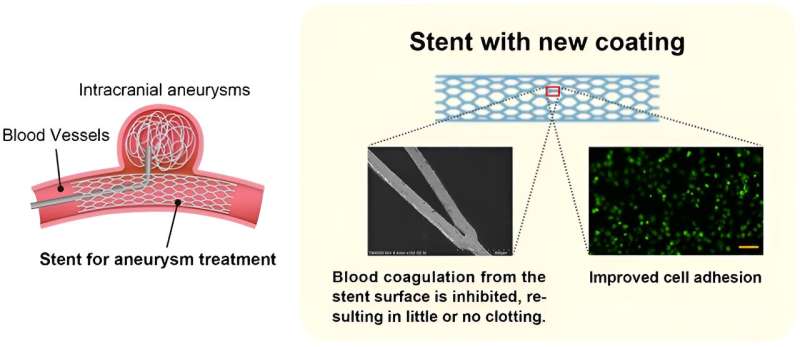In recent years, due to progress in medical equipment, minimally invasive endovascular treatment has become the mainstream in the treatment of intracranial aneurysms, the main cause of subarachnoid hemorrhage.
In particular, coil embolization with a stent has been reported to be highly safe and effective, and is now considered one of the most established endovascular treatment methods. However, this technique carries the risk of vascular occlusion due to thrombus formation caused by the blood incompatibility with stent, and antiplatelet medication is mandatory.

